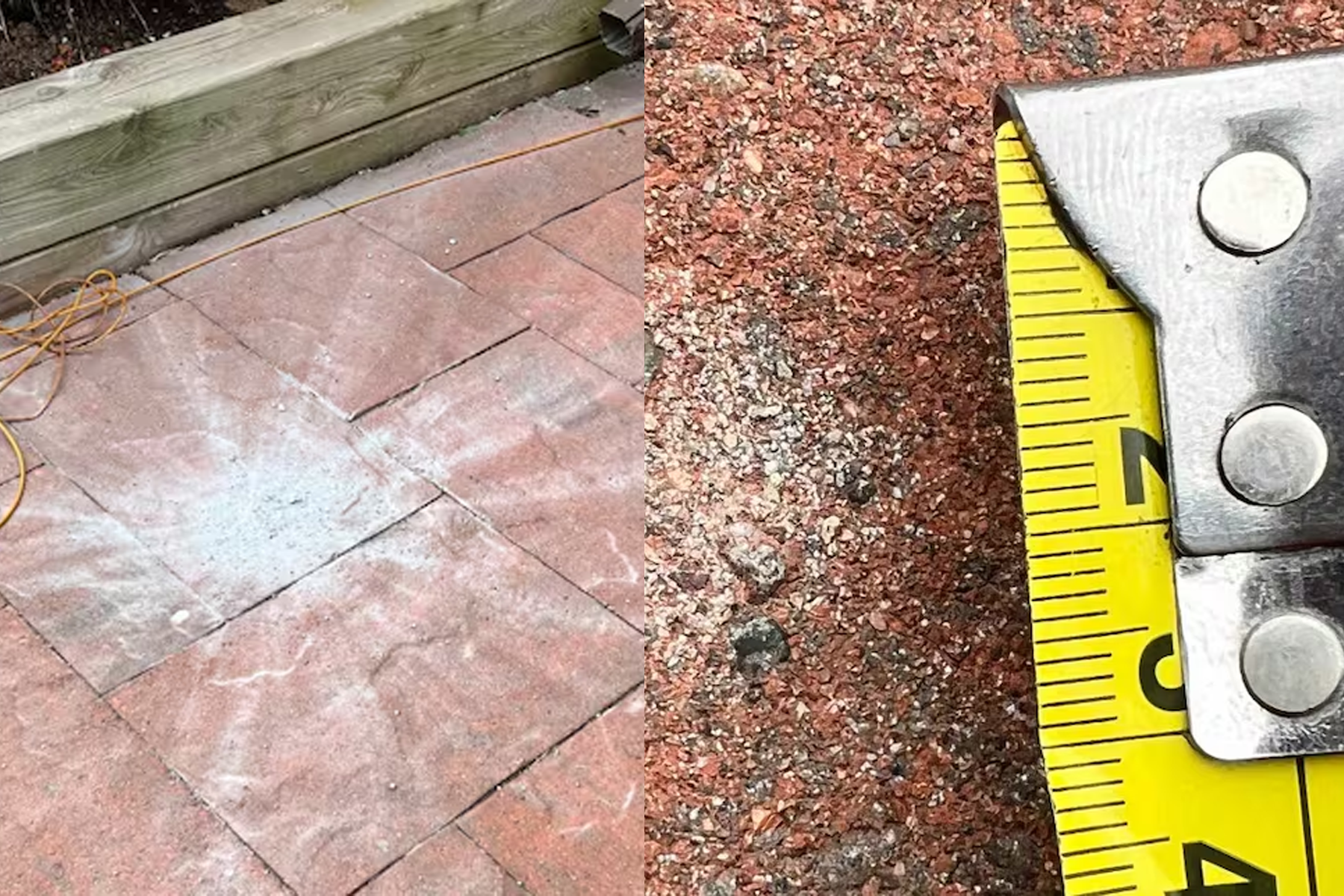P.E.I.’s first confirmed meteorite landed near a person’s front door in July of 2024, and has now been verified.
Prince Edward Island homeowner Joe Velaidum caught a video with audio of a meteorite landing by his front door in July just moments after he left to walk his dogs.
After noticing the strange dust mark on the walkway and lawn, he checked his front door video camera to find out what happened. When advised by a friend, Velaidum collected samples of the debris to send to be studied. About seven grams worth of fragments were collected and sent to the University of Alberta (UA), where they were confirmed to belong to an ordinary chondrite meteorite, says CBC News. Later, a total of 95 grams were acquired.
Chondrites are collections of tiny, rounded particles called chondrules that form when melted minerals congeal and freeze in the zero gravity of deep space and then become cemented together over time by accumulated space dust.
The sample has been named the Charlottetown Meteorite since the crash site was just east of P.E.I.’s capital.
James Dunn, an expert from the UA, confirmed that this was the first recorded meteorite event in the region. This rare occurrence provides a unique opportunity for the research and understanding of cosmic phenomena.
Chris Herd, the meteorite collection curator of the UA, said this meteorite is from the asteroid belt between Mars and Jupiter, and estimates it was travelling 200 kilometres per hour at the time of impact.
Scientists say this was the first time a meteorite strike was caught on camera with audio. The meteorite was going so fast that you can only see it in two frames before it crashed. The fact that it was caught on a frame at all is impressive.
A Naseba article says the area could see a tourism uptick “as curious visitors flock to the area, eager to explore both the meteorite’s impact site and the research facilities.” This celestial event also enriches local scientific interest and “has the potential to transform the island into a hub for astrobiology enthusiasts and geologists.”
For potentially billions of years, this rock had been floating through space, moving between the inner planets and all the objects in the asteroid belt. As it orbited the sun around the inner solar system, the rock drifted too close to Earth and began its descent. As it entered the atmosphere, it was subjected to extreme heat and pressure, which often causes meteors to explode into fragments. Despite the speed, heat and pressure, many meteoroids remain completely intact.
According to Herd, a closer look at the interior structure of the Charlottetown Meteorite fragments suggests that it endured many collisions in space. This likely weakened its internal structure; the collision with the walkway was just the last straw, blowing it to pieces.
It turned from a meteoroid (a piece of rock, ice and/or metal 2mm to 1m wide), to a meteor (a meteoroid that enters the atmosphere), to a meteorite (a meteoroid or asteroid that survives to reach the ground).
The Meteoritic Society says that prior to this, there were only 68 known meteorites discovered in Canada, found in every province and territory except for Nova Scotia, Nunavut and Prince Edward Island.
This is one historic moment that will be remembered fondly, especially for the locals of Charlottetown.

